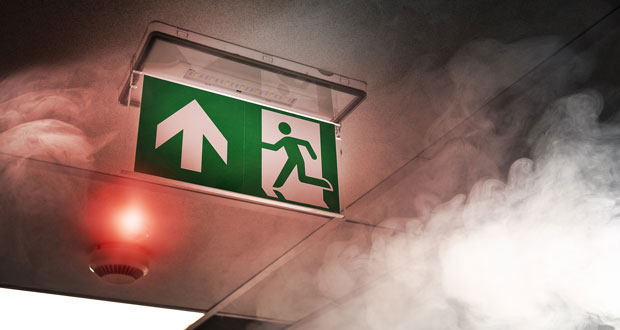 In the wake of the Grenfell disaster, the Government introduced the Building Safety Act 2022 which represents the latest phase in the effort to reduce the risk of a repeat occurrence of the fire. Rik Firth, Head of Operations at Your Choice Fire & Security on this and the other changes to regulations likely to impact FMs
In the wake of the Grenfell disaster, the Government introduced the Building Safety Act 2022 which represents the latest phase in the effort to reduce the risk of a repeat occurrence of the fire. Rik Firth, Head of Operations at Your Choice Fire & Security on this and the other changes to regulations likely to impact FMs
INSURANCE REQUIREMENTS BECOME PARAMOUNT
We’ve already started to see this in buildings we manage in the logistics and manufacturing sector, insurance providers are demanding a much higher standard of fire protection systems in place. This is a natural response to the rising cost of goods and labour in the UK. To maintain their margin, and protect their liability they are requiring a minimum of P1 fire classification.
The P1 category is the highest of the property protection certifications. The differentiating factors between a P1 and a P2 is that with a P2 not all areas are covered. A P1 category fire detection system ensures that a building has total fire protection. Often reserved for museums and listed buildings where damage to the building is just as important as the goods within.
The main reason for doing this is that if a fire broke out, and consumed much of the goods in a warehouse it would cost the insurers hundreds of thousands of pounds. By demanding that the fire protection covers all goods, insurers are reducing the risk and the probability that they will have to pay out.
Of course, upgrading a fire alarm to a P1 can be a costly project. But if not done, or if not done by a by a BAFE qualified team, it could invalidate your insurance. A disaster for Facility managers who guarantee peace of mind and complete protection for their clients.
BAFE are one of the top accrediting bodies in the UK, they ensure that all installers are maintenance providers are fully qualified and trained. Demanding they pass a rigorous enrollment process. BAFE will also help you find a recommended provider through their website.
ECO-IMPROVEMENTS WILL BE THE NORM
The UK Government have a net zero target to hit, more specifically to reduce all direct emissions from public buildings by 50 per cent and 75 per cent by 2032 and 2037 respectively. All UK emissions are to reach net zero by 2050. The Government has submitted several amendments to this target in recent years. With pressure mounting from the public, these are more likely to be brought forward than pushed back.
This is most likely to result in FMs and building managers being forced into adopting environmental improvements to their buildings to improve emissions. The easiest solution is to install solar panels which not only drastically reduce a building’s energy consumption but become cost effective in as little as three years for many businesses.
Solar panels have their own regulations which demand regular maintenance to ensure they are still performing as expected, and are still safe for use in public buildings. While solar panels are inherently safe, all electrical works comes with risk. Electrical fires are some of the most common in offices and residential buildings – it was in fact an electrical fault in an appliance that caused the fire in Grenfell Tower.
To avoid this our recommendation would be to use a NICEIC accredited installer. Similar to BAFE, it means they have passed rigorous inspection and have to abide by the highest standards.
A BAN ON CERTAIN BUILDING MATERIALS, AND CHANGES TO RRO AND FIRE RISK ASSESSMENTS
In 2022, the UK Government banned combustible materials for use in construction. This included MCM (metal composite materials) cladding panels with an unmodified polyethylene (PE) core on all new buildings. These changes meet recommendations from phase one of the Grenfell Tower inquiry.
The Grenfell Tower Inquiry panel’s final report is likely to be published in the later part of 2024, which means we should see a new wave of compliance changes relating to cladding products, active and passive fire safety measures and management of buildings.
We’re also likely to see changes to 2005’s Compliance RRO (Regulatory Reform Order) and Fire Risk Assessment in response to the recommendations made by phase two of the panel.
The best way to get ahead of the regulatory changes is to ensure your fire system is up-to-date and within the recommended manufacturer lifespan. Facilities managers are also recommended to have regular maintenance scheduled by a BAFE recommended maintenance partner, so get a site visit booked in, and ensure your buildings meet all the current requirements, and are affected the least when the compliance changes come into effect.






